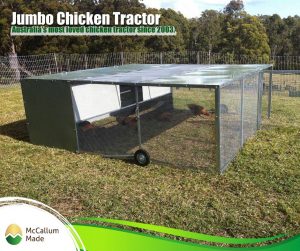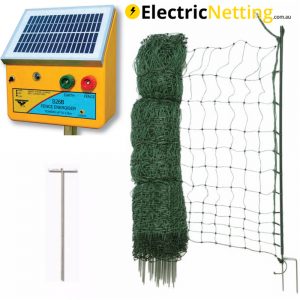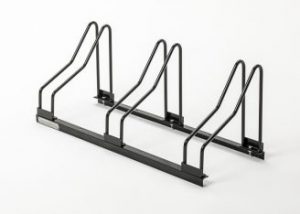Free range farming is a method of farming husbandry where the animals, for at least part of the day, can roam freely outdoors, rather than being confined in an enclosure for 24 hours each day. On many farms, the outdoors ranging area is fenced, thereby technically making this an enclosure, however, free range systems usually offer the opportunity for the extensive locomotion and sunlight that is otherwise prevented by indoor housing systems. Free range may apply to meat, eggs or dairy farming.
The term is used in two senses that do not overlap completely: as a farmer-centric description of husbandry methods, and as a consumer-centric description of them. There is a diet where the practitioner only eats meat from free-range sources called ethical omnivorism.
In ranching, free-range livestock are permitted to roam without being fenced in, as opposed to fenced-in pastures.
Contact us to request us to be listed.
Australia
Australian standards in relation to free-range production are largely espoused in third-party certification trade marks due to the absence of any significant legally binding legislation. A number of certification bodies are utilised by rearers to identify their products with a particular level of animal welfare standards. In events where producers do not choose to use a certified trade mark and merely state that their product is ‘free range’, the producer is bound by consumer expectations and perceptions of what constitutes free range. Producers are generally thought to be bound to Model Codes of Practice of Animal Welfare published by the CSIRO, and in some states this forms part of legislation.
Egg laying hens
In Australia, three farming methods for the production of eggs are utilised. In 2011, traditional cage (or battery) eggs accounted for 42% of value, barn-laid eggs account for 10% of value, free-range eggs accounted for 44% of value, and organic eggs accounted for 4% of value Increased demand for free range eggs due to customer concerns over animal welfare has led to a number of different standards developing in relation to three core welfare measures – indoor stocking density, outdoor stocking density, and beak trimming. The Model Code of Practice recommends practices for free range farming with the following standards:
● Maximum stocking densities indoors of 30 kg/m2, equivalent to about 14-15 birds/m2.
● Maximum outdoor stocking density of 1500 birds/ha, although this can be increased with rotation onto fresh pasture
● Access to the outdoor range for a minimum of 8 hours per day, except in adverse weather conditions
● 2 metres worth of popholes per 1,000 birds for access to the range
● Beak trimming is permitted, and to be undertaken by an accredited operator
The above standards are not always met, and on some occasions producers may want more ethical standards. As such, certified trade marks play a significant role in the determining of what constitutes free range. The key certifications used for layer hens in Australia include the following…
Egg Corp Assured is the weakest standard, set by the industry peak group and largely based on the Model Code of Practice. Egg Corp Assured differs in that it interprets the outdoor stocking density figure as largely irrelevant to welfare. Egg Corp Assured has been known to certify farms running up to 44,000 birds per hectare outdoors, far in excess of recommendations Like the Model Code of practice, beak trimming is allowed and indoor densities run up to 15 birds per m2.
RSPCA Approved Farming is a standard that can be applied to both barn-laid and free-range egg producers. Farms using this certification must have an indoor density of 9 birds/m2 indoors on slats, or 7 birds/m2 indoors in a deep-litter system. The standards dictate a maximum outdoor density of 1500 per ha without rotation, or 2500 birds per ha with rotation, and beak trimming is allowed.
Free Range Egg & Poultry Australia (FREPA) standards provides a sliding scale for indoor density, with 10 birds/m2 allowed only in enclosures housing less than 1,000 birds, and 6 birds/m2 the maximum for barns with over 4,000 birds. Nothing is said in the standards about outdoor density, thus it is assumed that farmers must meet the standards under the Model Code. Beak trimming is allowed under this certification.
Humane Choice True Free Range standards are some of the most sound as far as animal welfare is concerned. Beak trimming or any other mutilations is not permitted, perches must be provided, and maximum flock numbers cannot be greater than 2,500 per barn. The outdoor stocking density is 1500 birds per ha, and the indoor density is 5 birds per m2.
Australian Certified Organic Standards include criteria on feed content and the use of pesticides in addition to animal welfare requirements. The indoor density is a maximum of 8 birds/m2, although most operators under this standard list their density as 5 birds per m2. The outdoor density is 1000 birds per ha, and beak trimming is not permitted.
Chicken Meat
In Australia, free range and organic chicken accounts for about 16.6% of value in the poultry market. This percentage is expected to grow to up to 25% in the next 5 years. No meat birds are raised in cages in Australia There are three main certification trademarks in this market.
Free Range Egg & Poultry Australia (FREPA) standards are those in which most supermarket brands of free range chicken meat are accredited under. These standards require indoor stocking densities of up to 30 kg per m2 indoors (about 15 birds per m2), and beak trimming is not permitted. Outdoor stocking density is not stated, but it is understood that the outdoor range must be at a minimum 1.5 times the floor area of inside the barn.[27]
RSPCA Approved Farming standards for free range require an indoor stocking density of about 17 birds per m2, and outdoor densities of up to 17 birds per m2. No beak trimming is allowed under this system.
Australian


